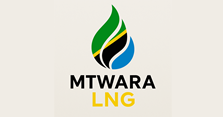Project Background
The Mtwara LNG Facility is a strategic initiative addressing critical energy challenges in East and Southern Africa. As the region faces growing demand and a global shift to cleaner energy, this project positions natural gas and renewables as key solutions to reduce dependency on imported diesel and petrol. Limited infrastructure and restricted access to domestic gas in rural and off-grid areas have hindered growth and exacerbated environmental risks.
The project leverages natural gas as a transitional fuel toward a low-carbon future. By meeting regional demand while supporting industrial growth, the Mtwara LNG Facility aims to reduce fuel imports, boost energy security, and stimulate regional economic development using Tanzania’s abundant gas reserves.
Global Energy Context
Natural gas accounts for about 23% of global primary energy use and is the fastest-growing fossil fuel due to its role in power generation and industry. Key global drivers include:
- Energy Transition: Global push to reduce emissions is accelerating the shift from coal to gas.
- LNG Market Expansion: Asia and Europe are reshaping global gas trade through increased LNG imports.
- Geopolitical Realignment: Events like the Russia-Ukraine conflict diversify supply routes.
- Decarbonization: Gas complements renewables and hydrogen in the clean energy transition.
Africa’s Natural Gas Potential
Africa holds over 630 trillion cubic feet (tcf) of proven gas reserves. Highlights include:
- Major Producers: Algeria, Nigeria, Egypt, Mozambique; rising discoveries in Senegal and Mauritania.
- Infrastructure Gaps: Many reserves remain undeveloped due to financing and logistics constraints.
- Domestic Demand: Rising across sectors, especially energy, industry, and urban areas.
- LNG Growth: Mozambique and Nigeria are expanding LNG exports.
Regional Gas Landscape: East & Southern Africa 🌍🔥
Tanzania
- Total Reserves: ~57 TCF
- Key Fields:
- Mnazi Bay: ~2.2 TCF
- Songo Songo: ~1.0 TCF
- Offshore (Blocks 1, 2, 4): ~50+ TCF (undeveloped)
- Development Status: Moving toward FID for LNG terminal in Lindi; Mtwara-Dar pipeline supports domestic use.
Mozambique
- Total Reserves: ~100–180 TCF
- Key Areas:
- Area 1: ~75 TCF (TotalEnergies, ENH, etc.)
- Area 4: ~85–100+ TCF (ExxonMobil, Eni, etc.)
- Onshore reserves: ~1–2 TCF
- Development Status:
- Coral South FLNG exporting since 2022
- Area 1 onshore under development
- Area 4 onshore pre-FID
Gas Reserve Summary Table
| Country | Total Reserves | Key Assets | Status |
|---|---|---|---|
| Mozambique | 100–180 TCF | Rovuma Basin (Areas 1 & 4) | FLNG live, export-ready |
| Tanzania | 57 TCF | Mnazi Bay, Songo Songo, Offshore | Domestic & export planning |
Strategic Implications
- Tanzania can be a regional LNG hub via Mtwara.
- Mozambique requires cross-border corridors like Mtwara-Beira.
Integration & Economic Impact
Mtwara LNG aligns with both Tanzania and Mozambique gas strategies, creating a shared corridor for regional energy integration.
Alignment with Tanzania’s Strategy
- Mtwara is the core liquefaction/export site.
- Inland hubs (e.g. Dodoma, Mbeya, Arusha) extend clean energy access.
Complementarity with Mozambique
- Rovuma Basin gas can connect to Mtwara.
- Strengthens regional supply, resilience, and reach.
Mtwara Jetty as Export Catalyst
- Jetty supports LNG carrier and ISO tanker loading.
- Enables exports to India, Kenya, Mozambique, Zanzibar.
- Serves industrial zones and Eco-Industrial Park (EIP).
Economic Impact
- Makes Mtwara an energy/industrial hub.
- Enables regional gas trade and integration.
- Creates jobs, supports SMEs, powers industry.
- Supports decarbonization, boosts exports.
Project Objectives
The Mtwara LNG & Industrial Park (MLIP) aims to drive energy transition, industrial growth, and economic resilience. It will transform gas from a stranded asset to a regional development engine.
Regional Challenges
- Energy Access: Infrastructure gaps, diesel reliance, limited CNG/LNG awareness.
- Economic Barriers: High youth unemployment, volatile import dependence, high energy costs.
- Environmental Pressures: Diesel emissions, biomass use, weak regulation.
Strategic Responses
- Infrastructure:
- 1.5 MTPA LNG plant in Mtwara
- Six inland hubs (Dodoma, Arusha, Mbeya, etc.)
- Sustainability:
- NGV conversion centers, virtual pipelines
- Gas integration in SEZs and industrial parks
- Jobs & Inclusion:
- 10,000+ jobs across sectors
- SME support, supply chain clustering
- Cross-Border Growth:
- Hub-and-spoke model across SADC/EAC
- Shared corridors reduce diesel use
- Aligns with AfCFTA and regional goals


